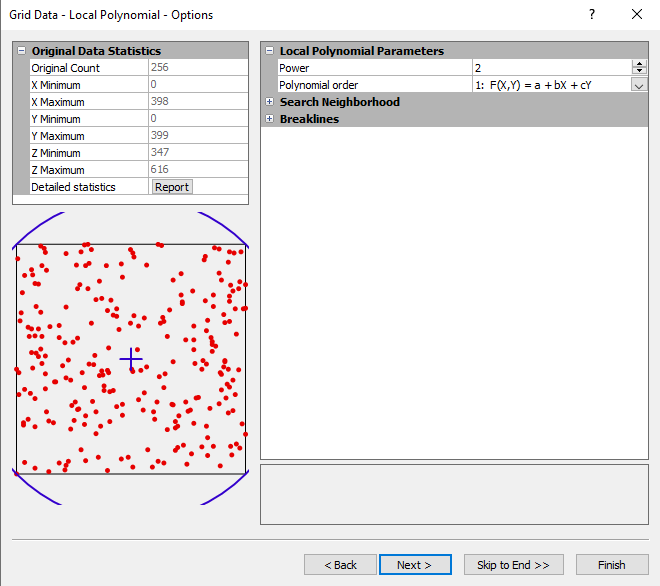Local Polynomial
The Local Polynomial gridding method assigns values to grid nodes by using a weighted least squares fit with data within the grid node's search ellipse.
Local Polynomial Options Dialog
In the Grid Data dialog, specify Local Polynomial as the Gridding Method and click the Next button to open the Grid Data Local Polynomial Options dialog.
|
|
|
Choose a Power and Polynomial Order in the Grid Data Local Polynomial Options dialog. |
Power
Set the Power to a number between 0 and 20. The Power parameter is used to assign the power for the weighted least square function, see Local Polynomial Math. This allows data closer to the grid node to have more impact on the value of the grid node than data farther away. This parameter is similar to the Inverse Distance to a Power gridding method.
Polynomial Order
Select a Polynomial Order, 1, 2, or 3.
1: F(X,Y) = a +bX + cY
2: F(X,Y) = a +bX + cY + dXY + eX2 + fX2
3: F(X,Y) = a +bX + cY + dXY + eX2 + fX2 +gX2Y + hXY2 + iX3 + iY3
Search Neighborhood
Specify search rules. For more information about search rules, see Search.
Breaklines
The Breaklines section is used to add breaklines to the gridding process. Faults are not supported with Local Polynomial. Breaklines are supported when creating a grid surface (XYZ data). Breaklines are not supported when creating a grid volume (XYZC data).
